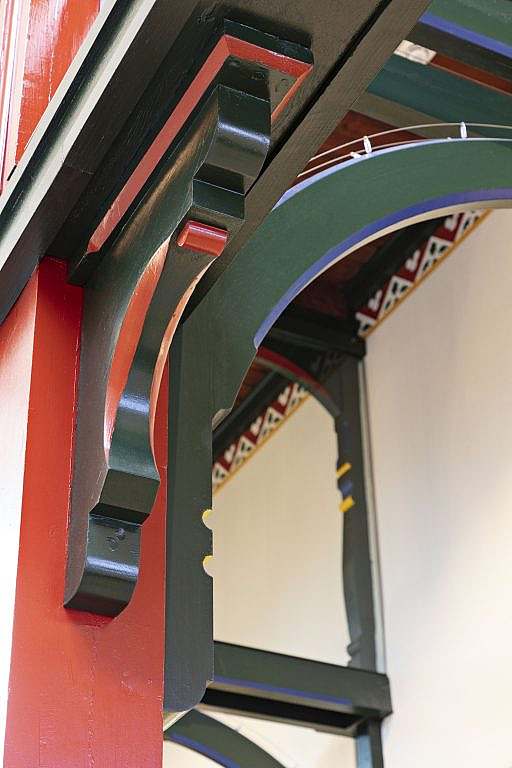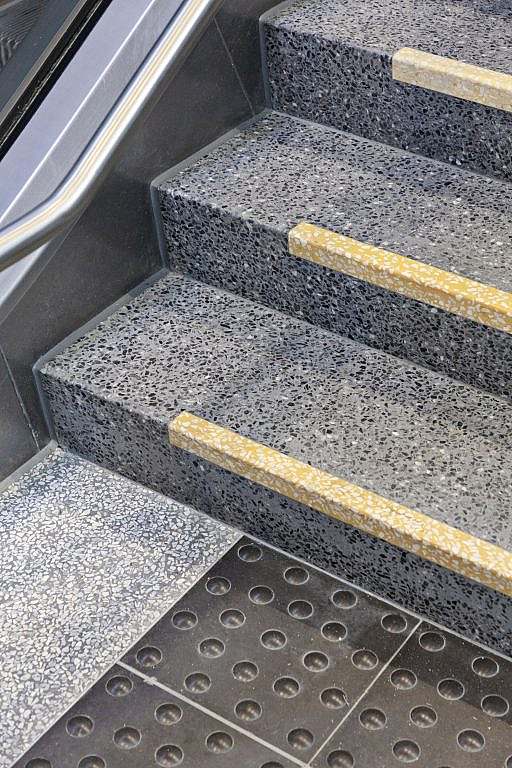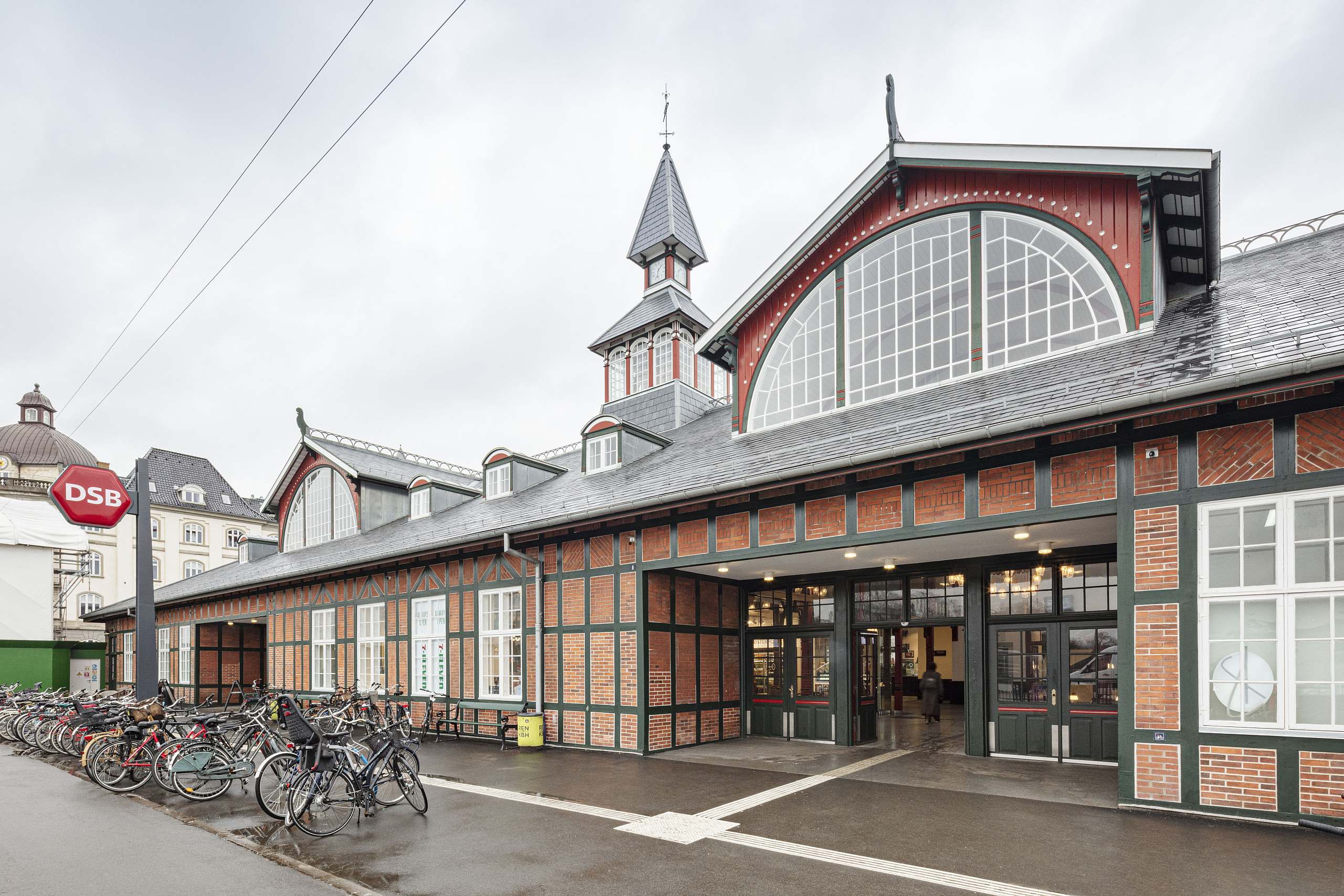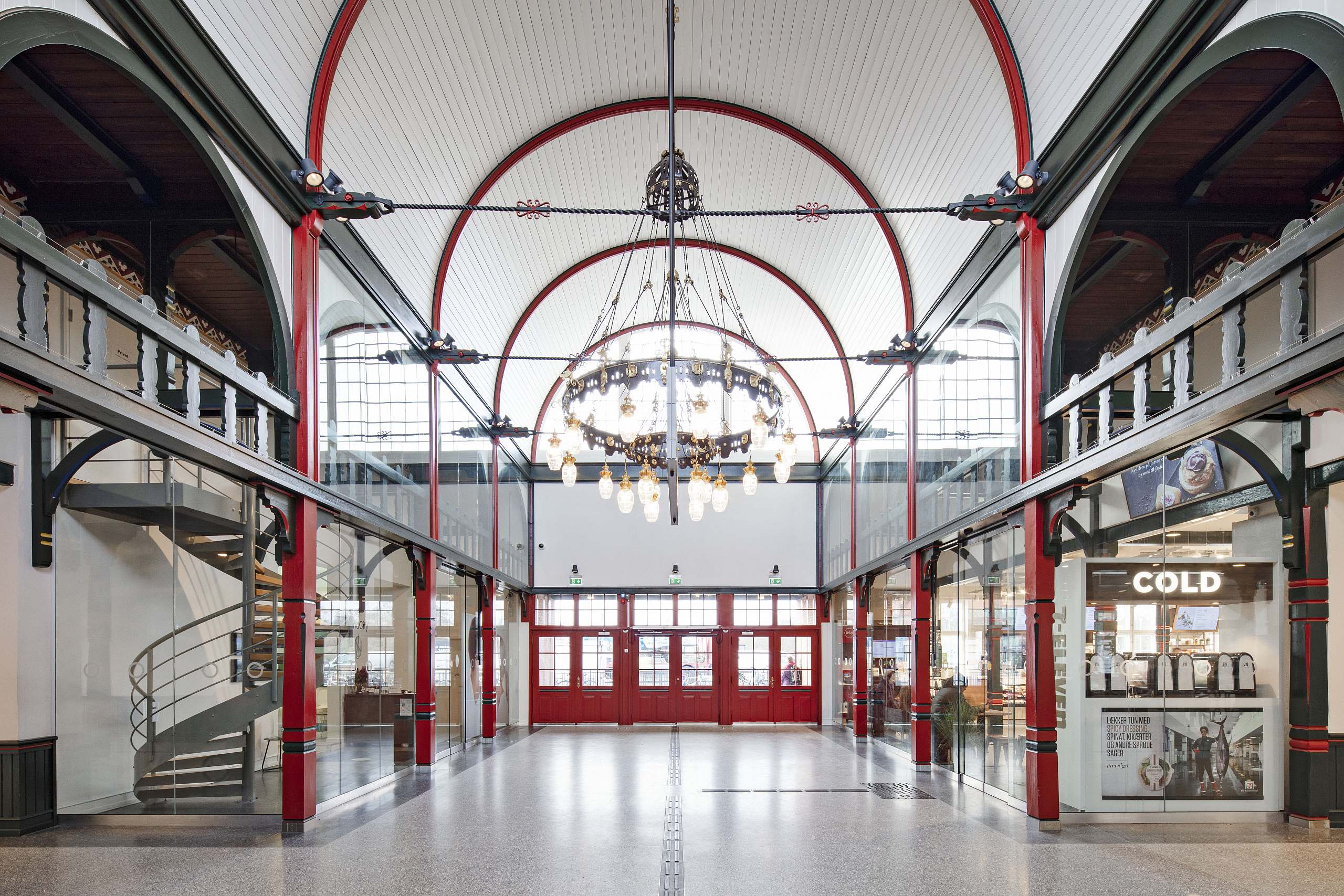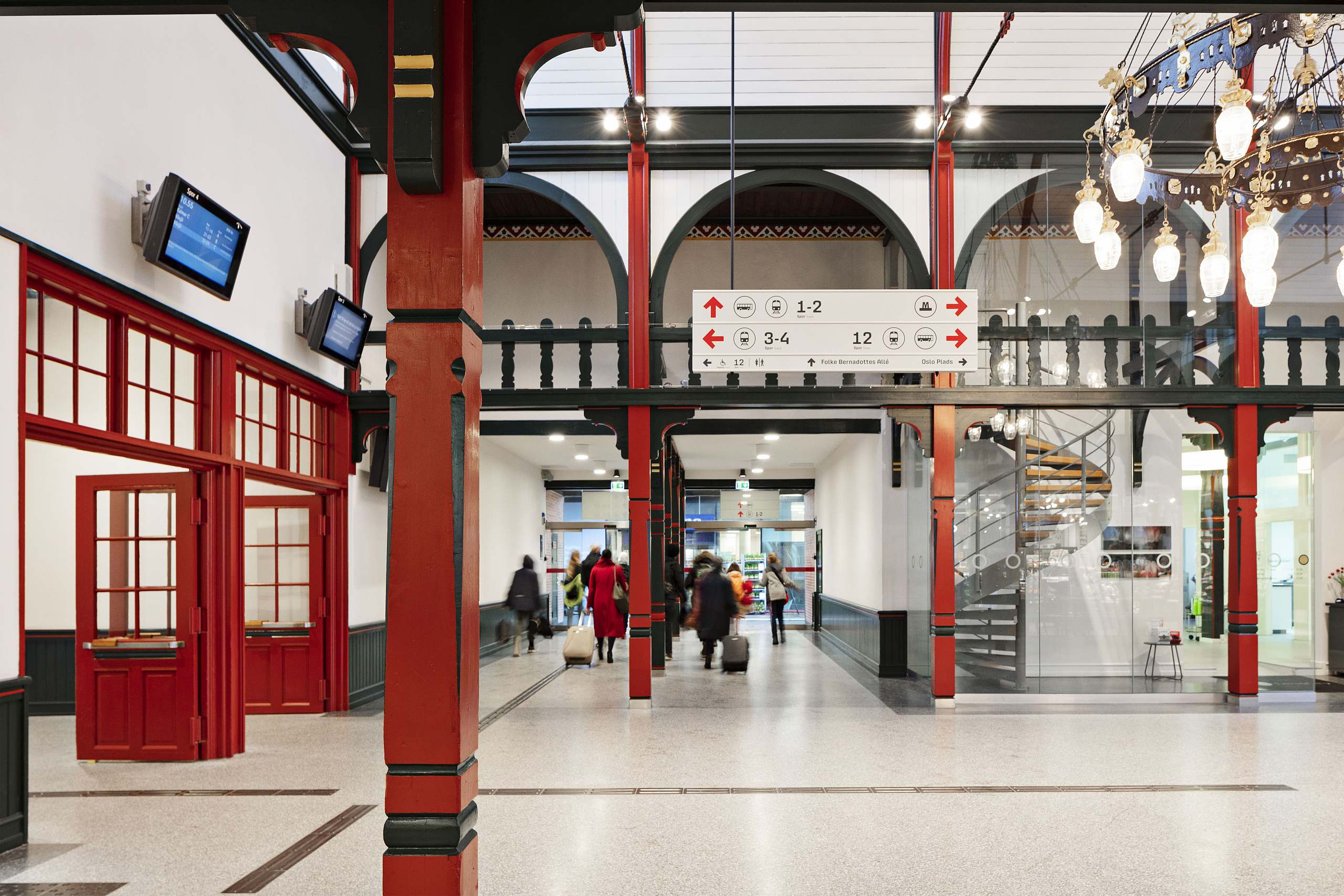Østerport station is listed and thus represents some of the finest of Danish building culture. The station was designed by DSB's chief architect Heinrich Wenck at the end of the 19th century. The renovation was carried out while maintaining full train services, which placed great demands on the logistics, approach and planning of the renovation project. Passenger numbers at Østerport Station are expected to increase from 30,000 to around 45,000 travellers daily after the opening of the Cityringen, and the new renovated Østerport Station will accommodate this. The building and forecourt have been designed to accommodate the increasing passenger flow between buses, commuter trains, the coastal railway and the metro.
Copenhagen
Denmark
DSB
4900 ㎡
100 M
Nominated for the Renovation Award 2021

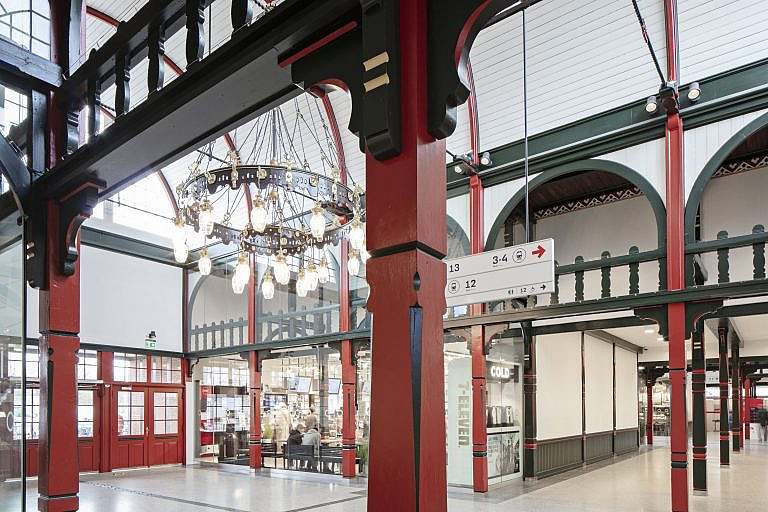
A comprehensive renovation respecting the station's architectural origins and modern building requirements
In the process, serious damage to the west gable occurred. Damage to the foundation meant that the entire west gable was recorded, dismantled and put into storage so that the building's foundation could be repaired. The gable was then rebuilt based on the meticulous registration. The truss structures have been repaired and in some cases completely replaced. A new slate roof has been laid and the roof structure has been renovated. The roof structure on which the whole building stands has been reinforced, and at the same time the two existing corridor tunnels have been upgraded with new floor, wall and ceiling finishes and contemporary lighting.
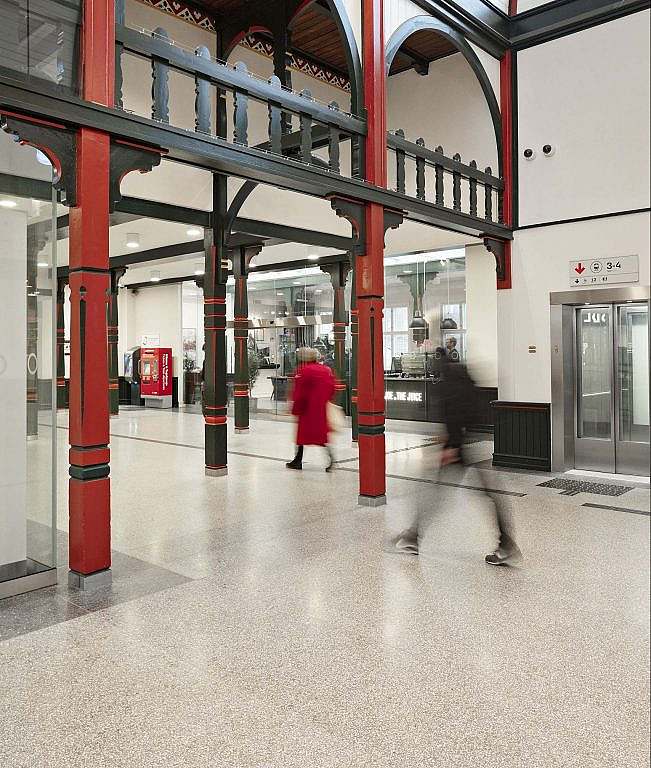
The station's original colour scheme has been restored
On the basis of old drawings and colour archaeological studies, the station's interior has been brought back to its original starting point of 1897. The woodwork is painted in red and green as a continuous colour theme, supplemented by yellow and blue paintwork on selected carpentry details.
Fine friezes along the ceiling are exposed and refreshed in the old colour scheme. The original ceiling heights have been restored as far as possible by removing several layers of suspended ceilings.
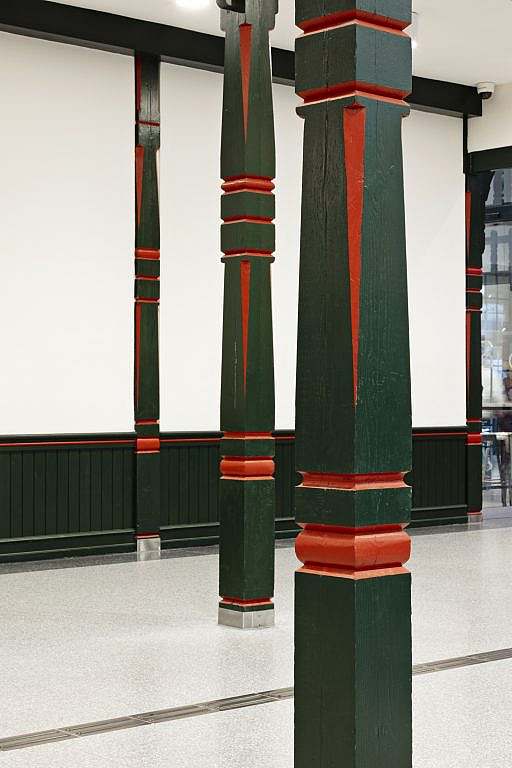
Wider walkways with hard-wearing terrazzo
The redesign has widened the corridors with new terrazzo coatingwhich is repeated in the stairs down to the platforms. The new hard-wearing terrazzo floor is cast in squares with rubber joints to allow the floor to give way.
Two new entrances have been created in Østerport Station, one on each gable, providing access to bus services at one end and the metro at the other.
The entrances to the suburban and coastal railway have been retained, but the corridor in the central passage of the station building has been extended by removing several load-bearing walls and replacing them with columns. At the same time, the original architectural qualities have been integrated and reinforced after the refurbishment. Great care has been taken to use materials similar to the originals and to recreate the colour scheme. The architectural work was planned and carried out in close collaboration with Castle and Culture Authority.
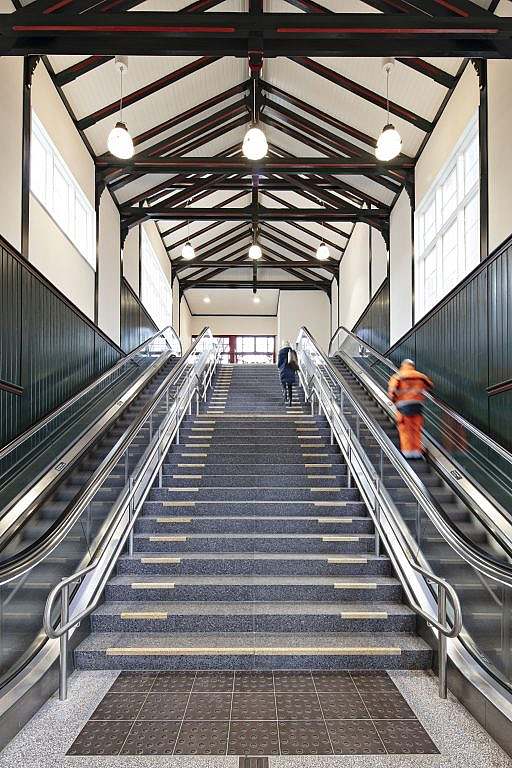
The original double-height arcades against the building's two handsome barrel vaults have been exposed, and have had their original arched spandrels rebuilt. New oak columns have been added and all the walls are constructed in wood, thatch and plaster.
